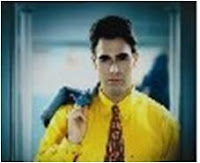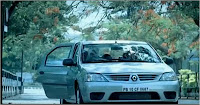Company : Titan Industries Ltd
Agency : Rediffusion
Brand Analysis Count : # 460
Xylys can be termed as India's own premium watch brand. The brand created by Titan Industries is taking on the iconic premium watch brands like Omega, Rado,Patek Philippe, Rolex,Cartier etc. The brand was born in 2006 gain rapid acceptance in the Indian watch market.
Indian luxury watch market is worth Rs 500 crore and is dominated by Swiss and other European brands. There is virtually no presence of any Indian brands in that segment. The rising affluent Indian consumer class and the trend towards more expressive lifestyle accessories prompted Titan to seriously look at this segment. Xylys is currently targeting the lower spectrum of the luxury watch segment.

Xylys was initially launched as a flanker brand for Titan. Titan which is the market leader in the mid-price segment felt that the upper end of their target customers were moving towards iconic global premium brands. With that intention of blocking any such migration , Xylys was introduced at the price range of Rs 8000- Rs 33,000.
Xylys however gathered good momentum with the brand clocking a 50% CAGR growth rate. From being a flanker brand, Xylys morphed to be a powerful growth brand in the course of time.
Titan while carefully analyzing the consumer behavior of premium watch customers, it found that the consumers were highly influenced by the "Country of Origin " association. The consumers loved the Swiss Made proposition and there is a huge association between " Swiss Made " and quality, precision , premium etc. The insight was that it would be difficult for an "Indian Made " tag to impress upon the target segment. Titan thus made Xylys - a Swiss Made watch. Xylys is manufactured at a state-of-the-art factory in Switzerland which has a rich heritage of 80 years in precision watch making.
Xylys' strong point was its design . The brand is being crafted in association with Swiss designer Laurent Rufenacht along with Titan's own designer Michael Foley. The sharp unique designs quickly made Xylys a fast growing brand in the segment.
Xylys was launched as a contemporary brand targeting the upwardly mobile successful men & women. The brand has segmentedthe market based on psychographic profiles. Xylys defines its customers as contemporary dynamic successful persons who has attitude and confidence. The brand wants to celebrate success with them. The customers of Xylys are highly individualistic persons who does what they love. These people would love to express themselves and loves to show their success to the world. The brand has a very well defined brand charter and values which I feel is an excellent marketing practice. ( Read Xylys Brand Charter here).
During the launch phase, Xylys was endorsed by the Actor Rahul Bose, tennis player Carlos Moya and super model Saira Mohan. The basic theme of the launch campaign was the story of how these people tread their own path and became successful.
Watch the launch ad : Xylys Launch
The brand at that time had the tagline " The power of X " . The brand used " X" to symbolize the differentiating factor in the highly successful people. X also denotes Xylys-the brand.
In 2010, the brand changed its positioning from " Symbol of Success " to " Feeling of Love ". The brand now is talking about falling in love with Xylys. Xylys is currently running a campaign reflecting the new positioning.
Watch the new campaign here : Xylys Possession
The brand have also adopted a new tagline " You do not possess Xylys , it possesses you ".
The new campaign is a significant deviation from the core positioning of the brand. The entire brand personality of Xylys was changed in the current campaign. I wonder why a brand which is growing should try to change its positioning at this critical juncture.
The earlier positioning of Xylys were talking about the highly individualistic expressive nature of successful people while the current positioning talks about how Xylys takes control of such a person. If you look closely the brand is totally off the mark regarding the core values that it stands for. I feel that the agency has not read the brand charter before creating the campaign. The purpose of creating a brand charter is to protect continuity in the communication. The product managers should use the charter as the basis for devising their communication strategies. The current campaign is very difficult to fit into the brand charter.
Regarding the execution of the new positioning , there is nothing worthwhile in the advertisement. The idea of a man being possessed by a product and forgets everything is an idea which has been raped a million times. Even the chocolate brand 5 star uses this idea as the central theme.
Having said that, Xylys' core strength is its design and since watch is an experiential product , consumers may fall for it when they see the designs. But the brand needs to create clutter-breaking campaigns if it wants to fight the likes of Omega , Rado etc.
Xylys has took lot of effort in creating a very good brand charter. Why not follow it ??









